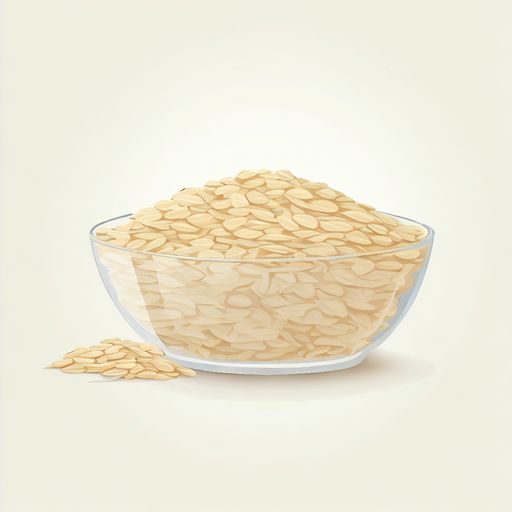From Oats To Oatmeal: How Are Oats Processed?
Oats are a versatile and nutritious grain that serves as a delicious breakfast staple for millions around the world. From oatmeal to granola, oats can be transformed into a variety of products through processing. But how exactly are raw oats turned into the oat foods we know and love?
Understanding the journey from oats to oatmeal provides insight into how processing works to make oats edible and safe. Let’s explore the key steps involved in the fascinating process of converting raw oats into diverse oat-based foods.
Oats Processing Overview
Oats in their raw natural state are inedible and require processing before consumption. The oat plant produces a seed technically called a caryopsis, where the edible oat groat is enclosed within an inedible hull.
Raw oat groats contain enzymes that allow them to break down and decay quickly. Before being eaten, oats must undergo processing to stabilize them for safe long-term storage. The hull must also be removed to make the oats digestible.
There are many types of processed oats available today beyond basic oatmeal. These include rolled oats, steel-cut oats, oat flour, oat bran, and oat milk, among others. Each oat product undergoes specialized processing tailored to its specific qualities and uses.
Step 1: Testing
After oats are harvested, farmers send samples to a lab for testing before further supply chain distribution. Samples undergo a battery of quality and food safety tests.
Technicians check for levels of foreign material like rocks, sticks, metal, and residual grain from other crops. Samples are also inspected for potential insect fragments and signs of spoilage.
Important metrics like moisture content and oat weight are measured. Acceptable oats can then proceed to the next phase of milling and processing.
Step 2: Milling
The milling process transforms raw oat groats into stabilized, edible oat products. Milling usually involves cleaning, dehulling, and kilning steps:
Cleaning
First, raw oats are subjected to various cleaning processes:
- Oats are loaded onto trays with mesh bottoms that sieve out unwanted debris and materials.
- Smaller contaminants get removed as oats pass through cylindrical sieves.
- A rotary magnet pulls out any stray metal pieces.
- Oats then undergo an intense high-pressure spray wash followed by hot air drying.
Dehulling
After cleaning, tough inedible hulls surrounding each oat groat are removed:
- Oats spin through rubber discs that remove hulls without damaging groats.
- Aspiration blows away loose hull particles.
- Sieving separates out unhulled oats.
- Polishing removes any remaining bits of hull.
Removed hulls become useful by-products, like oat bran, livestock feed, or fuel.
Kilning
This crucial step stabilizes oats and extends shelf life:
- Groats are steamed at high heat to destroy bacteria.
- Wet oats are dried and toasted with hot air.
- Resulting oats are called whole oat groats.
Step 3: Production
Once oat groats are stabilized, they are further processed into various oat products:
Sizing
Groats are separated by size using sieves and screens:
- Whole oat groats packaged for sale.
- Smaller groats go for more processing.
- Broken groats used for pet food.
Steel-Cutting
Groats are chopped into coarser steel-cut oats:
- Rotating bladed machine coarsely cuts groats.
- Produces different grades of steel-cut oats.
- Can be packaged or further processed.
Flour Milling
Oat flour and oat bran production:
- Groats ground into flour using stone or hammer mill.
- Sieving separates oat bran from flour.
- Bran packaged for baking or porridge.
- Sieves make coarse and fine oat flour.
- Coarse flour further ground into fine.
- Flour packaged or used in products.
Steaming
Additional steam processing:
- Softens whole and steel-cut oats.
- Extends shelf life.
Flaking
Flattened oats called rolled oats:
- Groats flattened by smooth or corrugated rollers.
- Hot air dries and toasts flakes.
- Varying flake thickness.
- Steel-cut oats can be rolled thinner.
Rolled Oats
Rolled oats used in products or sold:
- Packaged rolled oats.
- Granola, muesli, bars.
- Can be eaten cooked or “raw”.
Oat Milk
Oat milk made by blending oats and water.
Are Oats Considered Natural or Processed?
While processed, oats retain their natural qualities:
- No artificial ingredients or additives.
- Mainly uses water, heat, and pressure.
- Whole oat groats most “natural” form.
Can You Eat Unprocessed Oats?
Eating raw unprocessed oats is not recommended:
- Inedible hull makes oats hard to digest.
- Enzymes cause fast spoilage.
- May contain harmful bacteria.
- Oat groats need cooking to be edible.
Conclusion
While we enjoy oatmeal and granola without much thought, a lot goes on behind the scenes to bring us safe, edible oat products. Careful testing, cleaning, and processing transforms inedible raw oats into the diverse oat foods we love.
Understanding the oat processing journey gives us a deeper appreciation for this nutritious ancient grain. From the farmer’s field to the family table, oats undergo an impressive transformation in becoming a modern kitchen staple.
